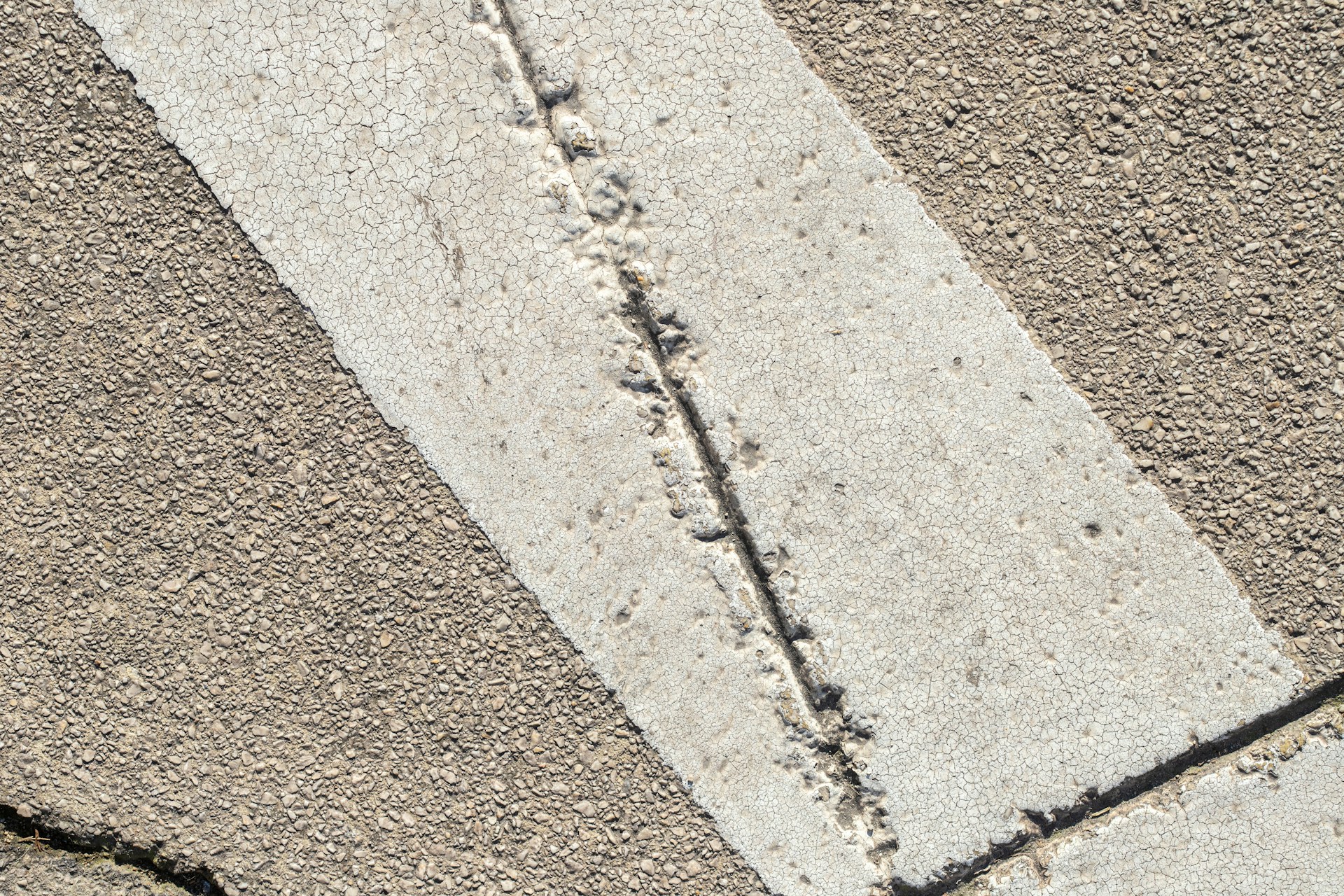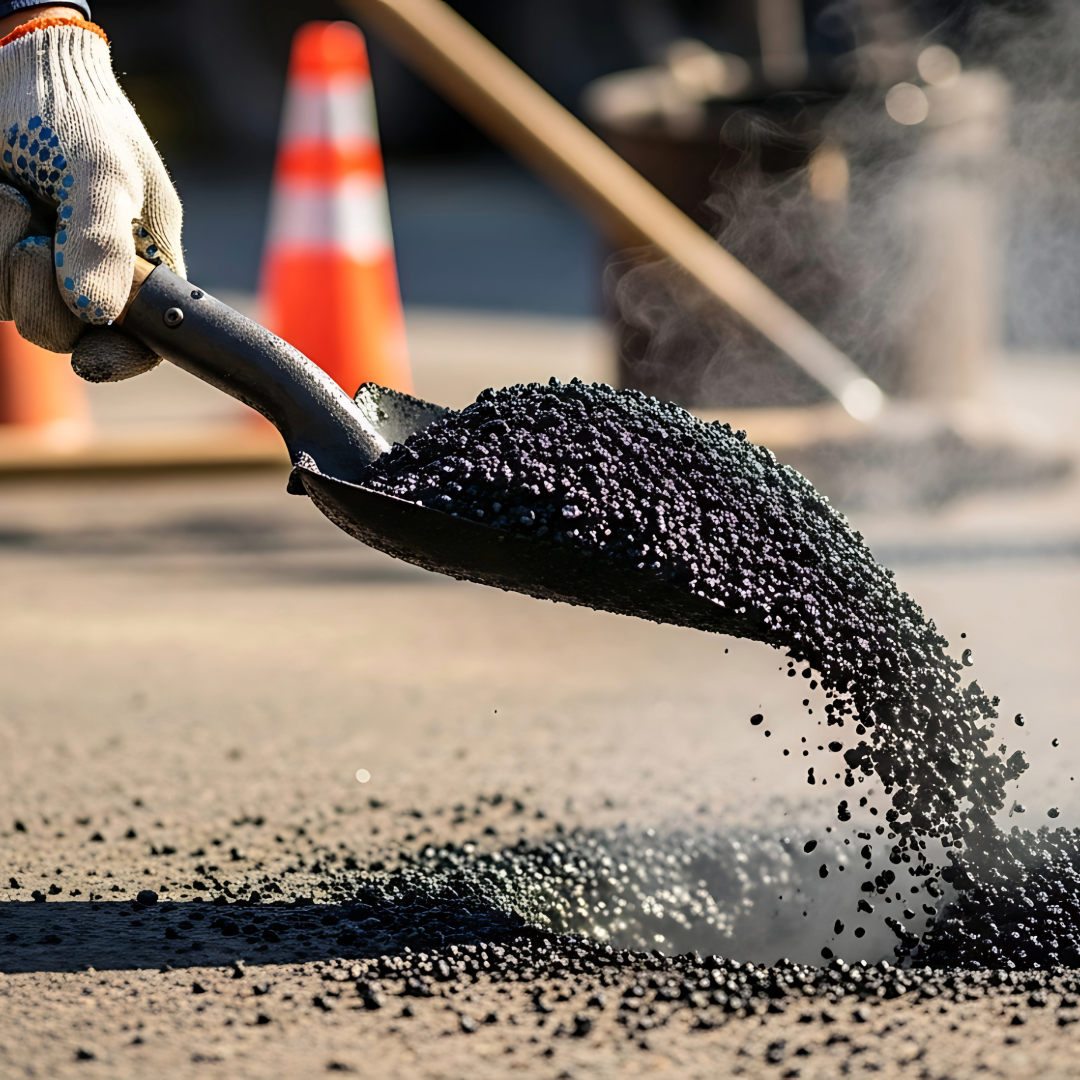Clear road lines do more than just guide traffic. They help drivers stay in their lanes, highlight crosswalks, and alert people to turns, stops, or zones with foot traffic. When these markings start to disappear, drivers lose important cues. That moment of doubt behind the wheel, especially in bad weather or at night, can turn risky fast.
Faded lines also create problems for repair and city maintenance crews. If lines are worn out or misaligned, it’s harder to repaint them properly. That delay can cause more wear and more confusion. Whether it’s a quiet country road, a busy four-way intersection, or even a shopping center parking lot, keeping road lines clear plays a big part in day-to-day safety.
Causes of Poor Road Line Visibility
Fading road markings don’t happen all at once. It takes time, and the elements play a big part. So does the surface, what materials were used, and how much traffic passes over an area. Here are the most common reasons road lines lose their punch:
– Weather exposure strips away material. Paint fades under constant sun, and rain loosens bonded surfaces. Snowplows can scrape thermoplastic right off.
– Heavy traffic wears lines down faster. Trucks, buses, and delivery vehicles are especially rough on road markings.
– Low-quality materials break down quickly. If the paint or thermoplastic wasn’t meant for high-use areas, it won’t hold up.
– Lack of maintenance lets faded lines stick around too long. Even well-applied paint needs refreshing now and then.
Imagine a school parking lot that hasn’t seen a fresh coat of paint in two years. During pickup time, faded crosswalks make it unclear where kids should cross. Without visible stop lines, drivers aren’t always sure where to wait. That lack of clarity can create unsafe moments without anyone even realizing it.
Identifying Road Line Visibility Issues
Many times, line visibility problems go unnoticed until there’s a close call. A car drifts into another lane at night, or someone misses a stop because they didn’t see the marking. Catching these signs early helps prevent accidents and keeps traffic flowing better.
Here are signs it’s time to take a closer look:
– Lines are faded, dull, or hard to distinguish from the pavement.
– Markings look broken or uneven across sections of pavement.
– Lines vanish when it rains or reflect poorly in headlights.
– Drivers slow more than normal at familiar points, trying to figure out where to go.
A walk-through can help, without special tools. Stand back during the day to check visibility from a common driver’s height. Then test again on a cloudy day or at night. Lighting, moisture, and road glare make a difference, and poor visibility in any of those conditions means the markings aren’t doing their job.
Good paint or thermoplastic should be easy to spot and consistent over its full length. If lines come and go depending on the light or angle, that’s a sign to refresh them before something serious happens.
Solutions for Improving Road Line Visibility
Once you know line visibility has dropped, the next step is to fix things the right way. It’s not only about adding new paint. Picking quality materials, cleaning the surface, and sticking to best practices can make a real difference in how long markings last.
Some helpful steps include:
1. Choosing the right product. High-traffic areas benefit from thermoplastic or epoxy-based materials that hold better than basic paint.
2. Surface prep is key. Power washing or sweeping away dust and dirt gives the paint or thermoplastic a clean place to bond.
3. Use the proper tools. Striping machines create crisp, even lines that not only look better but hold up longer.
4. Apply in layers. Two thin coats usually work better than one thick one, allowing proper drying time and better durability.
5. Schedule care. Just like mowing a lawn or servicing HVAC systems, pavement markings need regular attention to work their best.
Instead of treating road line painting like a once-and-done job, it works better as an ongoing routine. Set intervals based on the area’s use and wear, and update before things become too faded. That way, the improvements you make now last longer and give fewer headaches later on.
Preparing for Seasonal Changes
Weather doesn’t just cause wear—it changes how paint and coatings behave. Fall and spring are often the ideal seasons for repainting because the temperatures allow materials to bind and cure properly. But every season needs a slightly different approach.
Here’s how seasonal planning helps:
– Check weather reports before any work. Heavy rain or snow means paint might not stick.
– Avoid cold snaps. Freezing temperatures make bonding difficult and can cause paint to crack.
– Complete repainting by early fall. This gives surfaces time to set before winter comes around.
– Use late spring to inspect markings damaged by cold temperatures or road salt.
– Clean away debris, dirt, or leftover salt before applying anything new.
Let’s say a business waits too long and tries to repaint in mid-winter. Between freezing temps and surface salt, the paint never bonds right. In just a few weeks, it’s peeling off. Practicing seasonal awareness can help avoid wasted time and effort, especially as temperatures fluctuate more from year to year.
Ensuring Long-Term Line Visibility
Getting lines visible again is step one. Keeping them that way takes a plan. Doing inspections on schedule, using quality materials from the start, and sticking to routines keeps surfaces painted and drivers aware.
Here’s how to stay ahead:
1. Use materials selected for the amount of traffic and type of road.
2. Review the surface often, even when lines look okay.
3. Remove oil spots, dirt, or trash that hides lines or causes paint to lift.
4. Refresh markings when reflection fades or patchiness appears.
5. Work with county or city teams when public roads need updates.
A retail warehouse might do striping each summer. If the crosswalks near loading docks fade too early because of delivery trucks, a mid-year touch-up solves that. Or a school might check lanes and parent wait zones before each new academic year begins. These routines make upkeep easy and prevent safety issues from sneaking up.
With a steady review cycle and good materials, most places don’t need full repaint jobs very often. Just keeping up with small adjustments goes a long way.
Keep Roads Safe and Clear
Visible road markings are more than paint on pavement. They shape how traffic moves, how pedestrians cross, and how safe people feel behind the wheel. Making sure those lines stay bright and accurate doesn’t just improve looks—it helps prevent confusion, delays, and more serious problems.
Over time, weather, vehicles, and daily wear will take their toll. Ignoring fading lines only makes it harder and more expensive to fix later. A little effort now goes a long way. Clear, visible markings lead to smoother roads, safer lots, and confident drivers. Paying attention and planning ahead keeps everything running as it should.
To maintain clear and visible markings, consider the benefits of using top-quality materials and staying proactive with upkeep. Explore our comprehensive selection of products designed for effective road line painting and other pavement maintenance needs. Trust Hyperformance Traffic Safety Supplies to support your efforts in keeping roads safe and efficient for all users.




